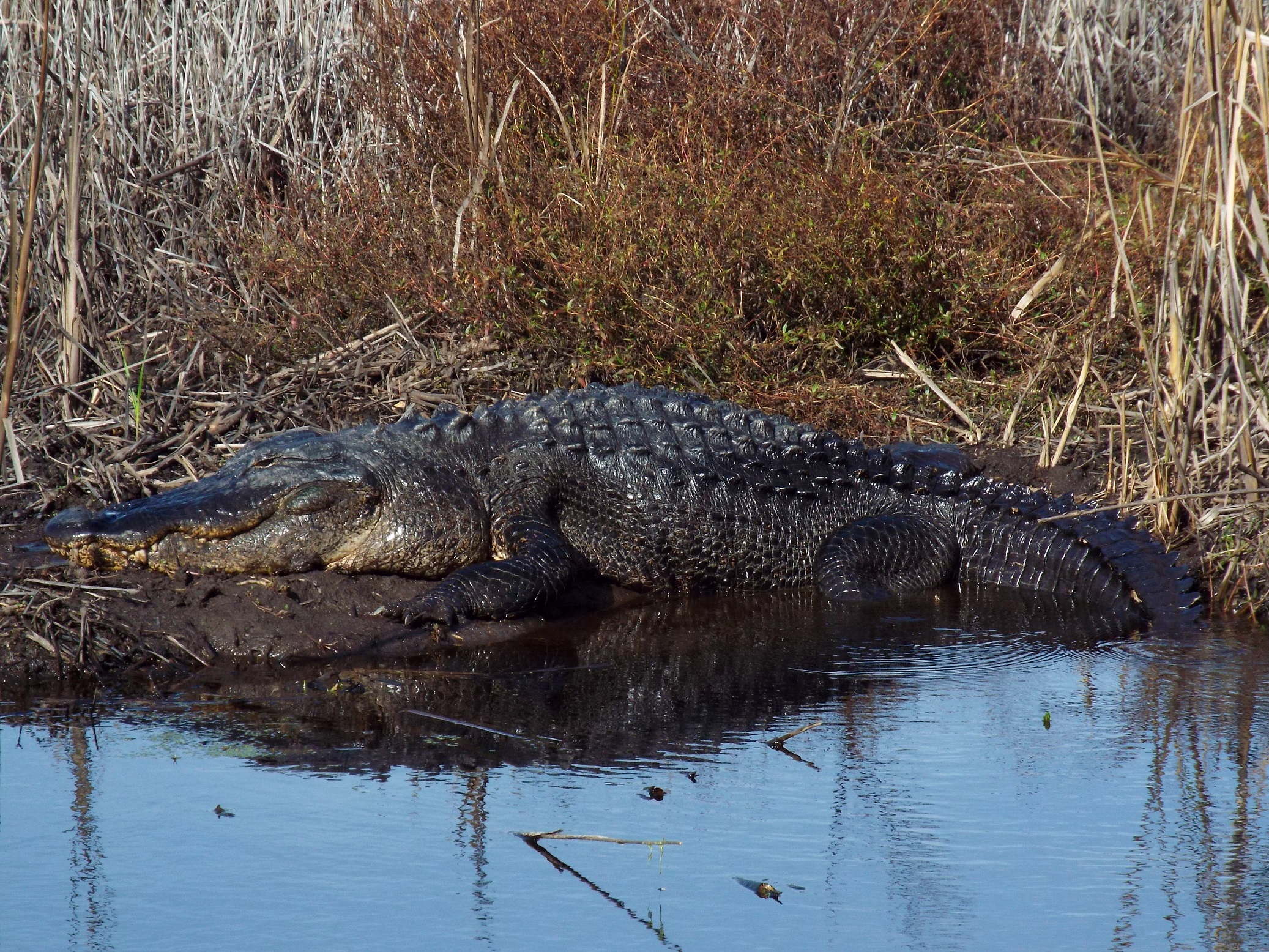
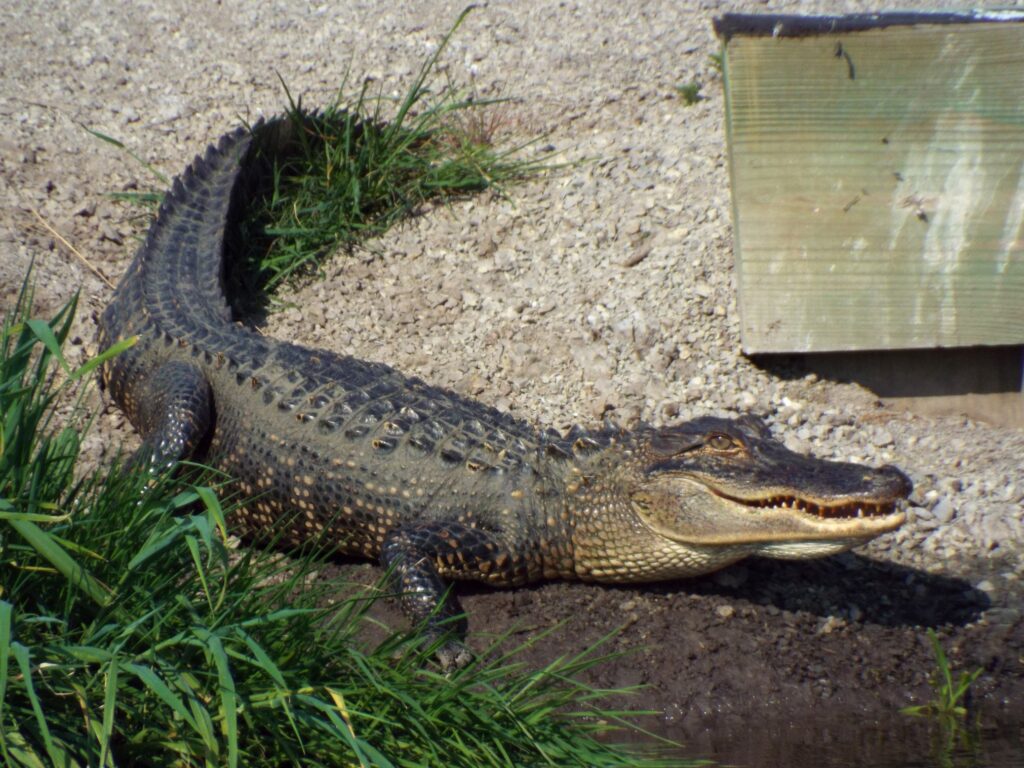
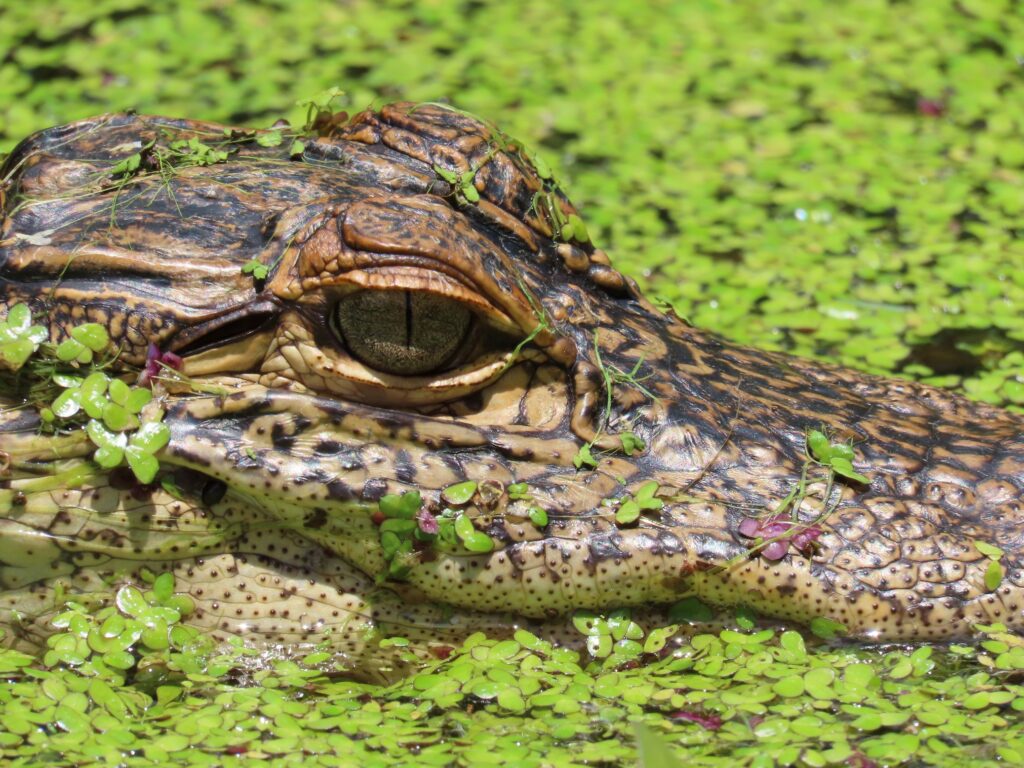
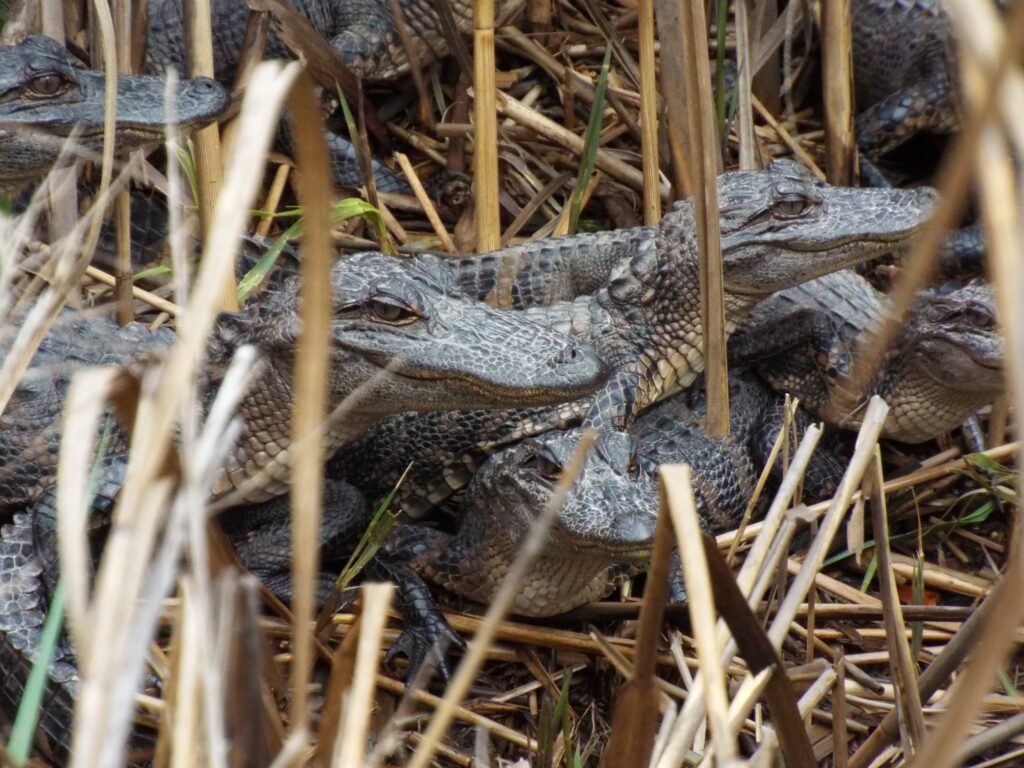
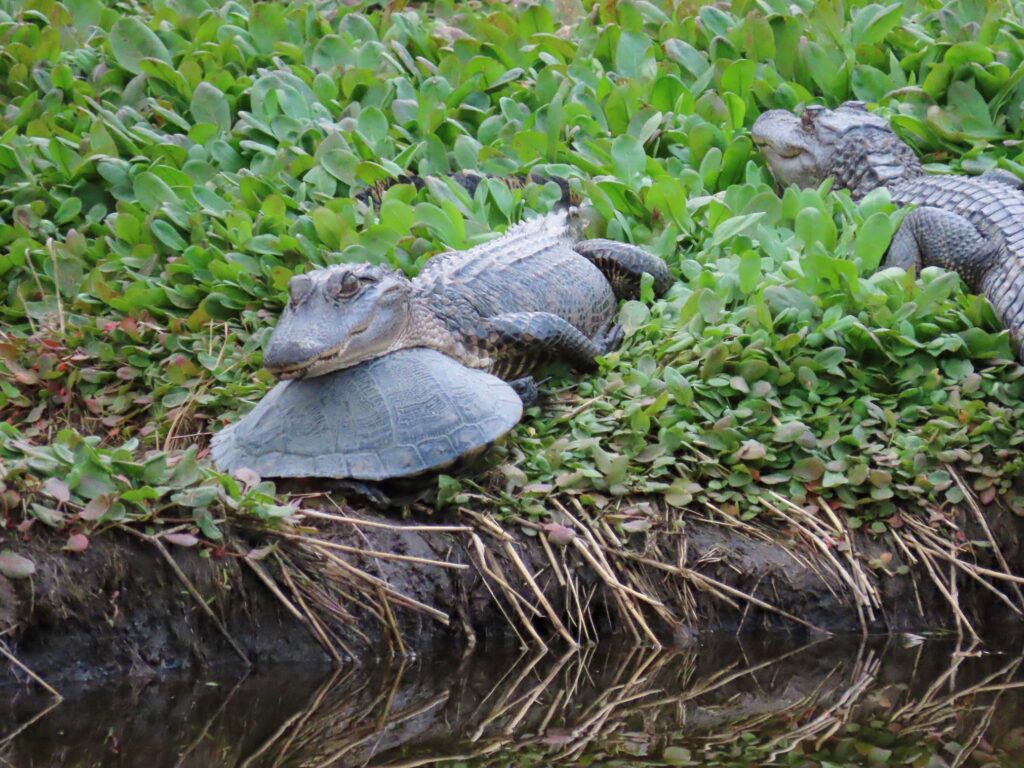
This week for Flora and Fauna Friday we have “the big lizard”, the American Alligator (Alligator mississippiensis).
The American Alligator is not actually a lizard, it’s our only representative of Crocodilians on Edisto. There’s only one other Crocodilian in the United States, the American Crocodile (Crocodylus acutus), which is found exclusively in south Florida. Alligators are found in fresh, brackish, and even saline waters throughout the coastal plain. They have salt glands for removing excess salt from their bodies but they’re not that efficient at it. So they prefer to stick to Freshwater when they can. Alligators are ectotherms and thus rely on heat from the environment to stay warm. They’re primarily nocturnal but are often found basking on the bank in the heat of the day, soaking up the sun to help them digest. They can live over 50 years in the wild and males can reach 15ft in length and weigh half ton. Females are more petite, usually only reaching 8ft in length and 200lbs in weight. Alligators have indeterminate growth, meaning they grow continuously throughout life. American Alligators have one of the strongest bite forces of any animal and they principally use that power to crush turtle shells. Gators are the top of the food chain in South Carolina. They have no natural predators when fully grown, other than Bull Sharks in that one in a million instance where gator and shark cross paths. Despite this position in the pecking order, Alligators mostly eat fish, crabs, and turtles along with the occasional wading bird and Raccoon. Unlike Crocodiles, Alligators rarely go after anything they can’t swallow whole. However, those who tempt fate often find their date with destiny.
Alligators are a keystone species. They dig in the mud underwater to create depressions that hold water during droughts. These gator-made puddles are critical to the survival of fish and amphibians who inhabit shallow wetlands. Old Alligator nests do the reverse, creating dry hills in the swamp where other reptiles can nest and wetland trees and shrubs can take root. Somewhat counter intuitively, they’re the first line of defense for the nests of wading birds, like Egrets, Ibis, and Wood Storks. The single greatest danger to these bird nests are Raccoons. Raccoons love eggs and despite the birds nesting en masse over Gator infested swamps, Raccoons are still willing to make the treacherous swim for heron on the half-shell. Both Alligators and Raccoons are nocturnal and it doesn’t take a rocket-scientist to guess who’ll win that aquatic one-on-one. Although Alligators unintentionally protect fledgling wading birds, they won’t hesitate to make a meal of unlucky birds who fall from the nest.
American Alligators start life as an egg inside a mound of dirt and leaves on the bank of the water. A pile of detritus lovingly constructed by their mother. When the baby gators hatch, they begin calling for mama, who is most often lurking nearby. Mother Alligators protect their young for the first year or two of life. Baby gators feed on minnows, frogs, crawfish, and insects, transitioning to larger prey with age. Males can be quite territorial with each other. Mature bull gators (I believe the technical term is “big boys”) are known to kill, and subsequently eat, smaller males they find in their territory. This forces adolescent Alligators to flee to far off puddles in late spring to avoid predation. That’s why small Alligators seem to spontaneously crop up all over the Lowcountry every June. Bull gators court females with a bellow display. He floats with his back just below the surface of a glassy mire and forcefully exhales through his throat with a resonant, bassy growl that vibrates his entire body. This bellowing vibrato shakes the water around him, creating energetic ripples across its surface and presumably wooing the object of his affection.
Alligators are another conservation success story. Since Europeans first arrived in the Americas, native predators have been persecuted relentlessly. Wolves and Cougars were extirpated from the state, Black Bears nearly were, and Alligators were following suit. The Alligator’s only saving grace was their preference for inaccessible swampy habitat. However, even those murky havens were not safe from lumbering, draining, and filling. With the introduction of the endangered species act, the American Alligator was given a second chance. Because of their association with rookeries, the recovery of the American Alligator went hand in hand with that of the Wood Stork. Nowadays, with how thick our wetlands are with gators, you can scarcely imagine that the species was once so close to the brink!